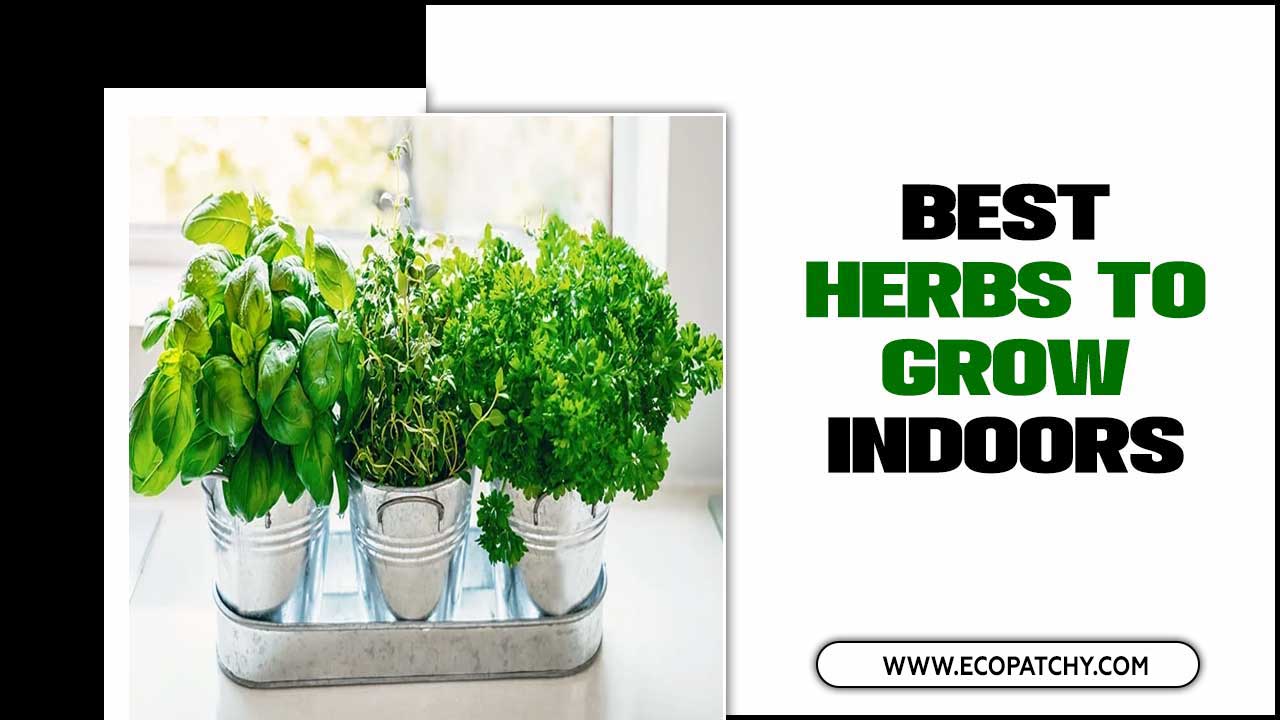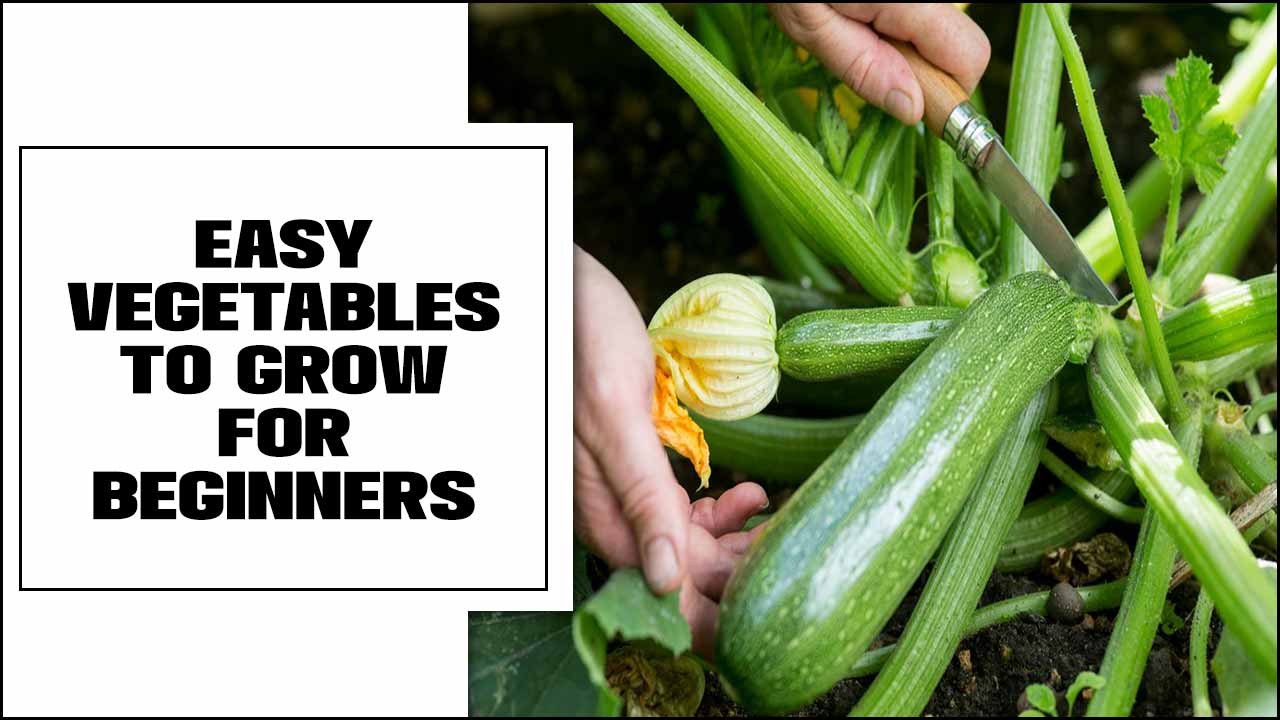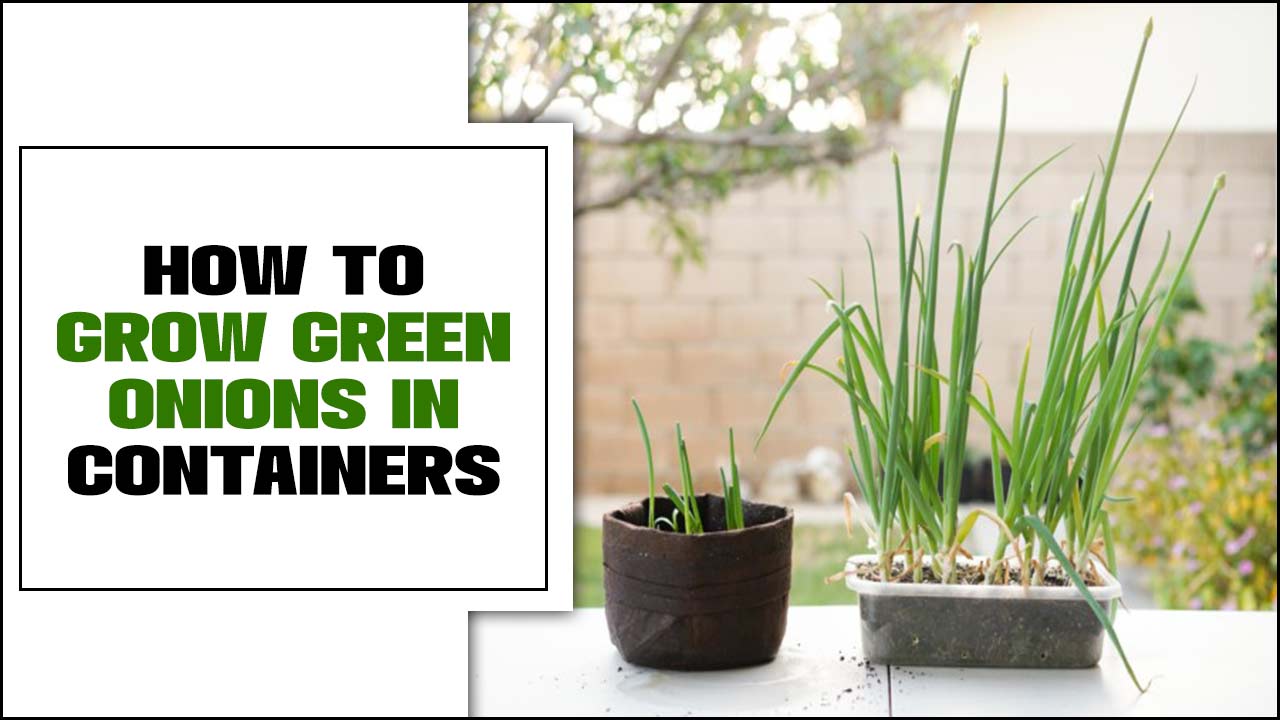Growing your microgreens can be a rewarding and cost-effective way to incorporate fresh and nutritious greens into your diet. These tiny, nutrient-dense plants are packed with flavour and can be grown indoors, making them a perfect option for those with limited space or unfavourable outdoor growing conditions.
Not only do they add a pop of colour and texture to your dishes, but microgreens also contain high levels of vitamins, minerals, and antioxidants, making them a valuable addition to any meal.
We will explore the benefits of growing microgreens indoors, the different types, and how to grow them successfully in the comfort of your home. Whether you are a seasoned gardener or a beginner, this article will provide the essential information and tips to start your microgreen journey.
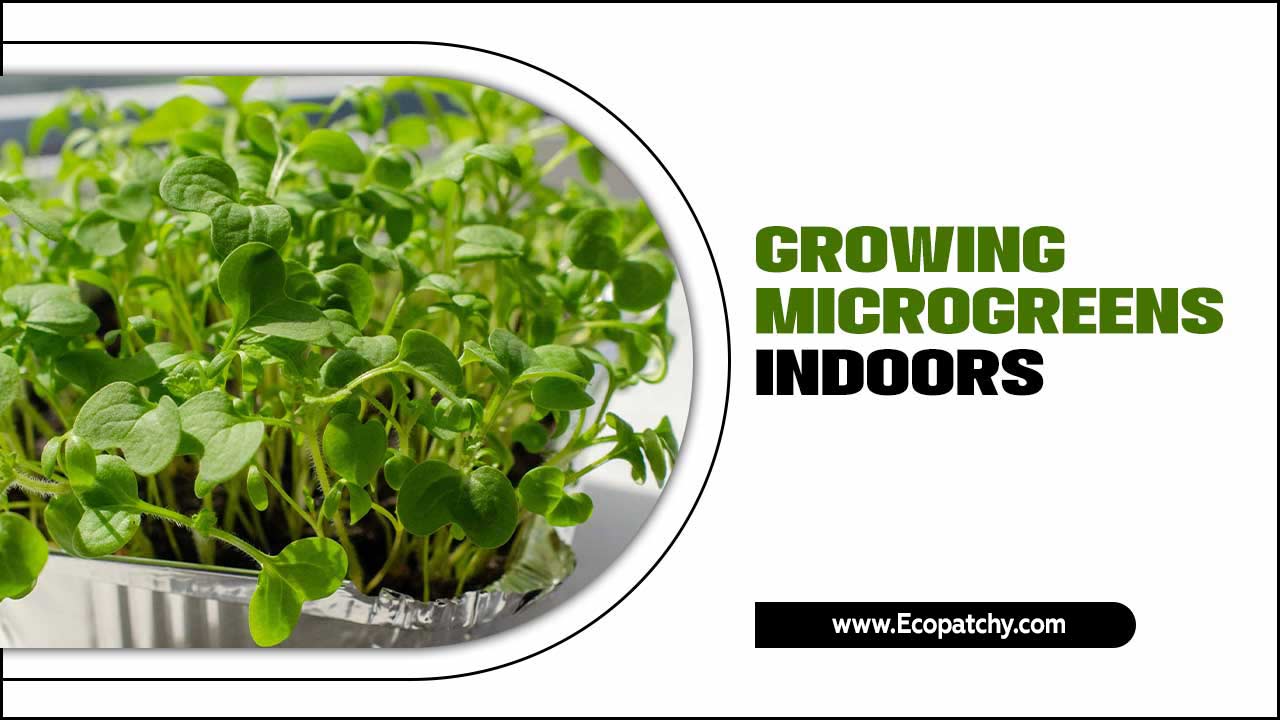
The Different Types Of Microgreens
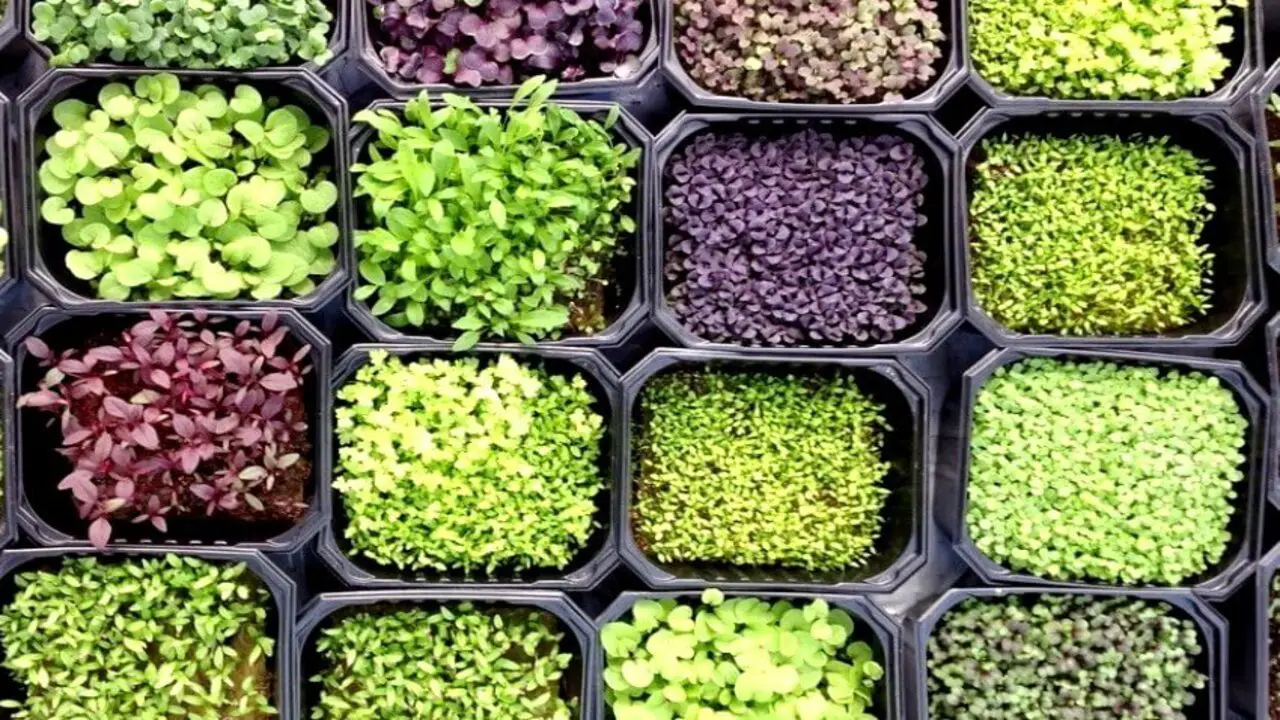
Understanding the different types of microgreens is essential for individuals looking to explore the world of urban farming or enhance their culinary expertise.
Microgreens, young edible greens harvested just after sprouting, have gained popularity in recent years due to their vibrant flavours, nutritional benefits, and aesthetic appeal. By knowing the various microgreens available, individuals can cultivate diverse flavours and textures in their dishes, elevating the overall culinary experience.
- Radish Microgreens: These have a spicy and peppery flavour and are rich in vitamins A, C, and K.
- Sunflower Microgreens: They have a nutty flavour and are packed with nutrients like vitamin E, folate, and selenium.
- Pea Microgreens: These have a mild and sweet flavour and are a great vitamin C, fibre, and iron source.
- Broccoli Microgreens: They have a mild and slightly bitter taste and are loaded with vitamins A, C, and K, as well as sulforaphane, a powerful antioxidant.
- Beet Microgreens: They have a slightly earthy and sweet flavor and are packed with vitamins A, C, and E, as well as iron and potassium.
- Kale Microgreens: These have a slightly bitter and peppery taste and are rich in vitamins A, C, and K, as well as calcium and iron.
- Cilantro Microgreens: They have a strong
Equipment / Tools Materials
Understanding the equipment, tools, and materials needed for growing microgreens is paramount for any aspiring microgreen grower. The success of cultivating these delicate greens relies heavily on creating and maintaining an ideal growing environment.
- Grow Trays Or Containers: These can be plastic or metal trays specifically designed for growing microgreens. They should have drainage holes to prevent waterlogging.
- Growing Medium: Use a high-quality soilless growing medium such as coco coir or peat moss. This provides the necessary nutrients and support for the microgreens.
- Seeds: Choose high-quality, organic seeds specifically meant for microgreens. Popular options include sunflower, radish, broccoli, and pea microgreens.
- Spray Bottle: Used for misting the microgreens to keep them adequately hydrated during the growing process.
- Water Source: A clean and reliable water supply is essential for watering the microgreens.
- Lighting System: Indoor microgreens require adequate light for proper growth. You can use natural sunlight or invest in grow lights such as fluorescent or LED lights.
- Ventilation: Good air circulation is important to prevent mould and disease. You can use a small fan to ensure proper airflow.
11 Easy Steps On How To Growing Microgreens Indoors
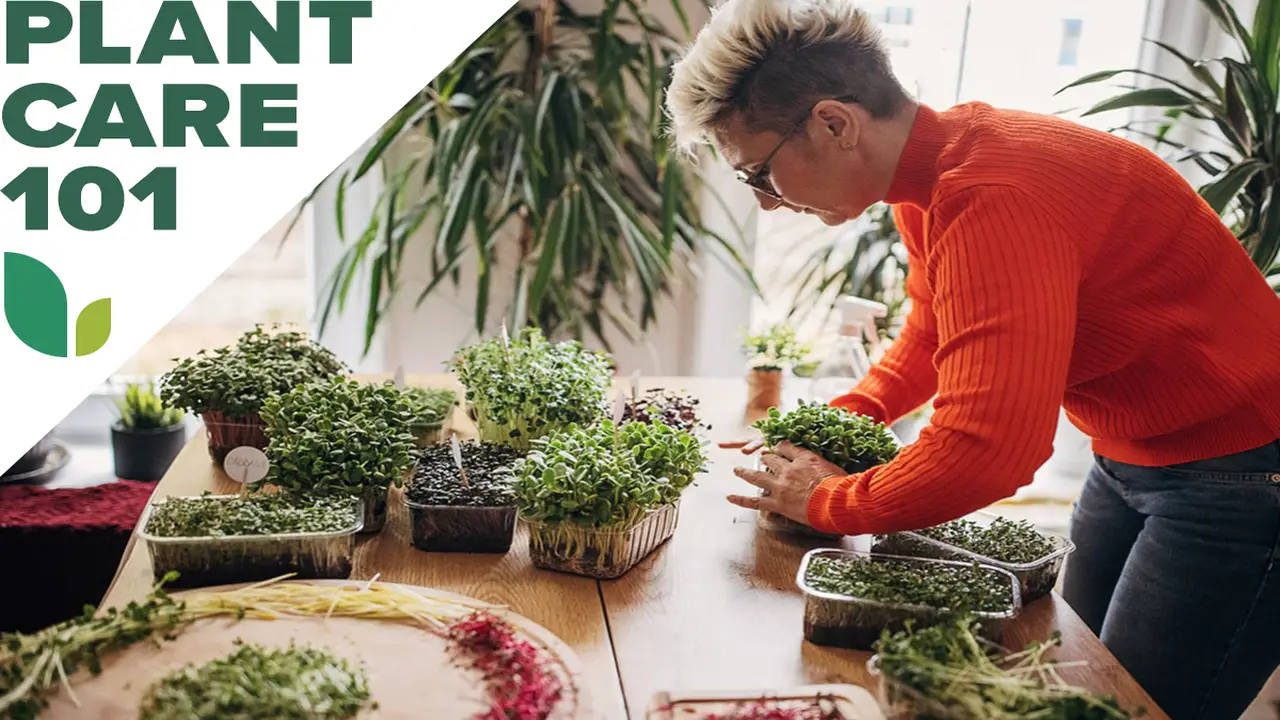
Knowing how to grow microgreens indoors cannot be overstated in today’s fast-paced and urbanised world. Microgreens, essentially young and tender versions of vegetables and herbs, have gained immense popularity recently due to their exceptional nutritional value, unique flavours, and aesthetic appeal.
By cultivating these tiny greens within the confines of our homes, we ensure a steady supply of fresh and healthy produce and contribute to sustainable living practices. One of the primary reasons why growing microgreens indoors are crucial is the ability to have a year-round supply of these nutrient-dense greens. Here, we give you 11 easy steps to Growing Microgreens.
1.Decide What Types Of Microgreens To Grow
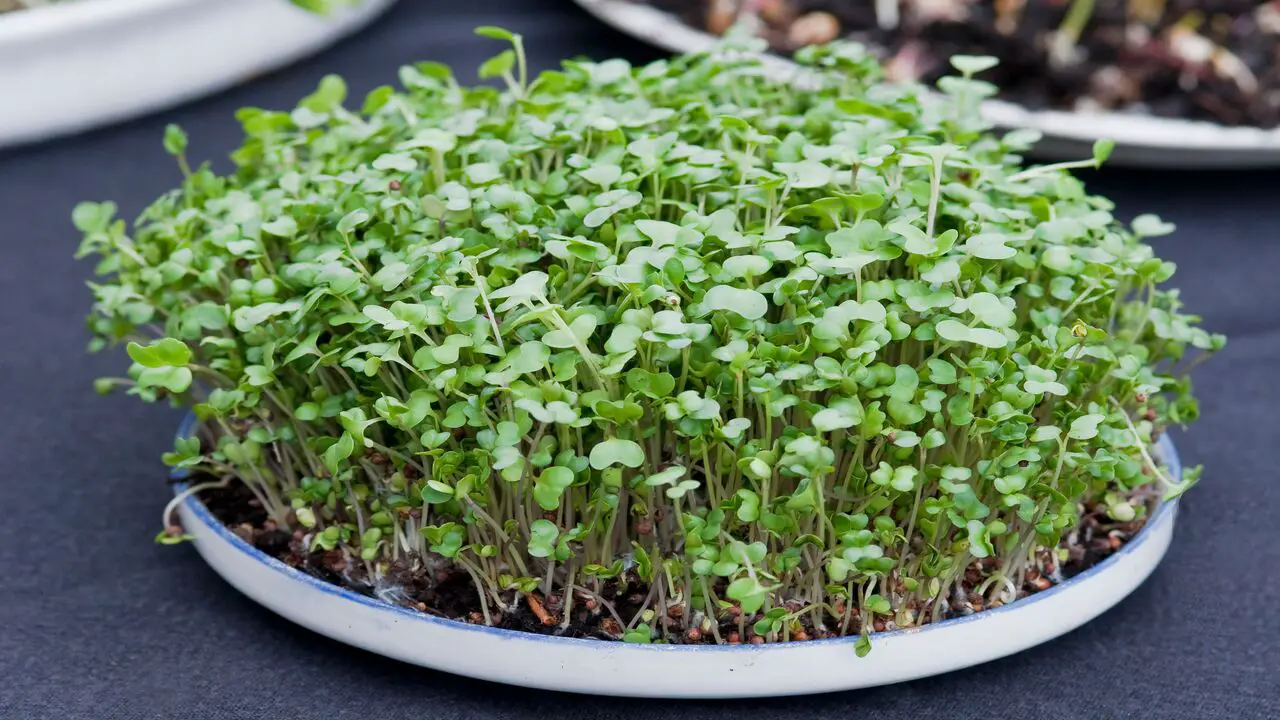
When embarking on the journey of growing microgreens, it is first essential to decide what types to grow. This decision will set the foundation for a successful and fulfilling endeavour. The variety of microgreens available is vast, ranging from arugula and kale to radish and sunflower. Each type has a unique flavour profile and nutritional benefits, making the selection process exciting and important.
To make an informed decision, it is recommended to consider factors such as personal preferences, market demand, and ease of cultivation. For those new to growing microgreens, starting with a few popular and easy-to-grow varieties, such as broccoli or pea shoots, may be wise. These varieties are famous for their mild flavours and quick growth cycles, making them ideal for beginners.
2.Choose Your Growing Container
One of the most important decisions regarding growing microgreens is choosing the right growing container. The container you select can greatly impact the success and health of your microgreens. There are several options available, each with its advantages and disadvantages.
One popular choice is a shallow tray or flat. These containers are typically made of plastic or metal and provide a wide surface area for the microgreens to grow. They are lightweight, easy to handle, and allow for efficient watering and drainage. However, they may not be the best option for long-term growth due to their limited depth.
3.Choose Your Growing Medium

Regarding growing microgreens, one of the key factors to consider is the choice of growing medium. The growing medium is crucial in providing the necessary nutrients, moisture, and support for the microgreens to thrive.
There are several options available, each with its advantages and considerations. One popular choice for growing microgreens is soil. Soil provides a stable base for the roots to anchor, ensuring proper absorption of water and nutrients. It also offers a natural environment for the microgreens to grow. However, soil can be messy and may require additional steps, such as sterilization, to prevent the growth of unwanted organisms.
4.Dampen Soil
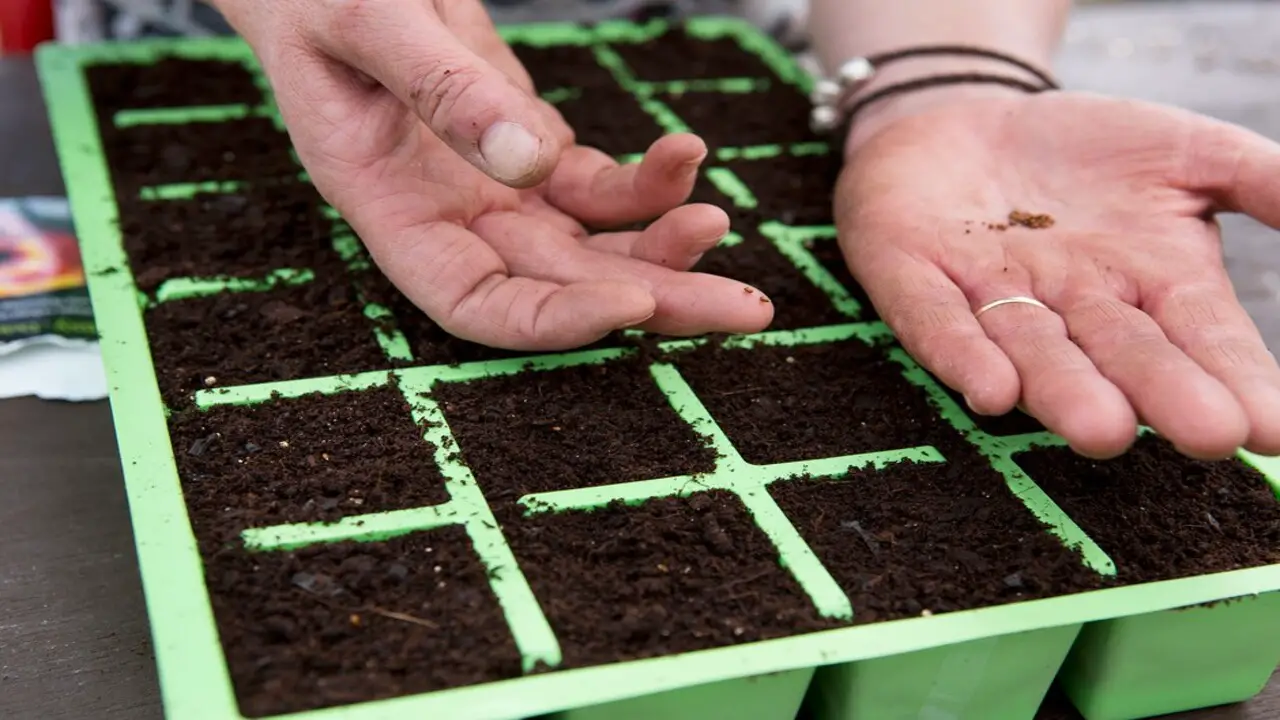
Regarding growing microgreens, one crucial aspect to consider is the soil’s moisture level. Properly dampened soil is essential for these delicate plants’ successful growth and development. It is important to follow a few key steps to achieve the optimal moisture content. Select a high-quality potting mix specifically formulated for indoor gardening.
This soil type provides microgreens’ necessary nutrients and drainage capacity to thrive. Before planting the seeds, dampen the soil thoroughly but avoid saturating it. The goal is to achieve a moist but not soggy environment.
5.Fill Containers
Growing microgreens is a popular and efficient way to fill containers with fresh and nutritious greens. Microgreens, the tender shoots of vegetables and herbs, are packed with flavour and nutrients, making them an excellent addition to any diet.
With the right setup and knowledge, it is possible to cultivate these greens in the comfort of your own home. To start growing microgreens, one must first select the appropriate containers. Depending on the desired quantity and variety of greens, these can range from small trays to shallow pots. Choosing containers with proper drainage is essential to prevent waterlogging and promote healthy growth.
6.Sprinkle Seeds

In recent years, the trend of growing microgreens has gained significant popularity among gardening enthusiasts and health-conscious individuals. These tiny plants, packed with nutrients and flavour, are cultivated from the seeds of various vegetables and herbs. One of the first steps in this process is to sprinkle seeds onto a suitable growing medium.
This simple yet essential task sets the stage for cultivating vibrant and delicious microgreens. When selecting the seeds for growing microgreens, choosing high-quality, organic seeds is crucial. Free from chemical treatments or genetic modifications, these seeds offer the best chance of producing healthy and flavorful microgreens.
7.Cover Seeds
Cover Seeds, also known as seed or germination covers, play a crucial role in growing microgreens. Microgreens, young and tender plants harvested just after the first leaves have formed, are gaining popularity among health-conscious individuals and culinary enthusiasts.
These tiny greens are packed with vitamins, minerals, and antioxidants, making them a nutritious addition to salads, sandwiches, and other dishes. When growing microgreens, using cover seeds is essential to ensure successful germination. These covers create a favourable environment for the seeds to sprout by protecting them from external factors such as temperature fluctuations, light exposure, and pests.
8.Water
Water is an essential component for the successful growth of microgreens, especially when cultivating them indoors. Microgreens, the young and tender seedlings of various plant species, require consistent moisture levels to thrive and reach their full potential.
Indoor growing environments often lack the natural rainfall that outdoor plants receive, so growers must provide adequate water to their microgreens. Regarding watering microgreens, precision and balance are key. Overwatering can lead to root rot and other diseases, while underwatering can stunt growth or cause the plants to wither and die.
9.Cover
Regarding growing microgreens, one important aspect to consider is the cover to dampen the soil. Being tiny and delicate, microgreens require a controlled environment that promotes optimal growth.
The cover plays a crucial role in maintaining moisture levels in the soil, promoting germination and preventing drying out. Choosing the right cover is essential. A transparent plastic lid or a thin layer of clear plastic wrap can create a mini greenhouse effect. This cover traps moisture and heat, creating a favourable environment for the seeds to sprout.
10.Care For Plants
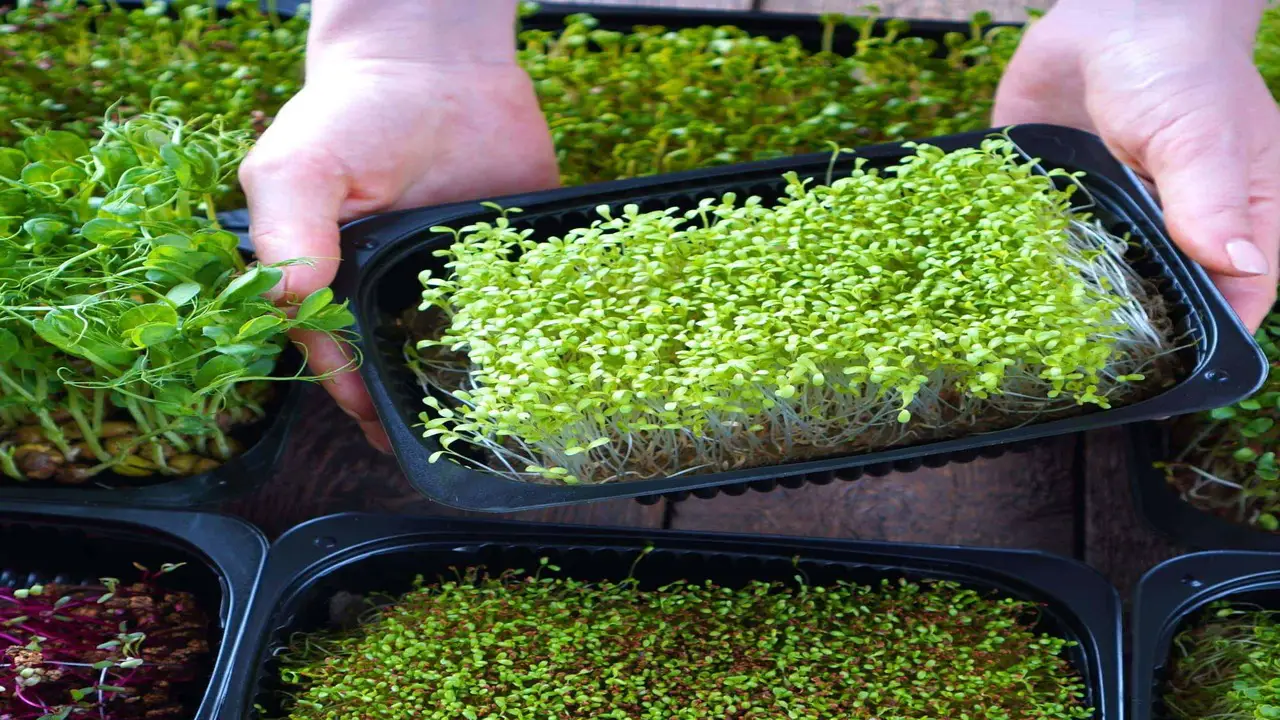
As an avid gardener and horticultural enthusiast, I understand the importance of proper plant care. One aspect that has gained popularity in recent years is growing microgreens. These tiny, nutrient-packed greens are visually appealing and offer many health benefits. Certain key factors must be considered to ensure successful growth and optimal harvest.
- Gently spread the seeds evenly across the soil surface, ensuring good coverage.
- Lightly press the seeds into the soil, but avoid burying them too deep.
- Water the soil evenly, ensuring it remains moist but not waterlogged.
- Place the container in a warm and well-lit area, preferably near a window or under grow lights.
- Ensure that the microgreens receive adequate sunlight or artificial light for at least 68 hours daily.
- Regularly mist the microgreens with water to maintain humidity and prevent drying out.
- Monitor the moisture levels and water the plants as needed, avoiding overwatering.
- As the microgreens grow, gently thin them out if they become overcrowded.
- Harvest the microgreens when they reach the desired height, usually around 10
11.Harvest
Indoor farming has gained significant popularity recently, providing a sustainable solution for producing fresh and nutritious crops without relying on traditional agricultural practices. One such practice that urban farmers and health-conscious individuals have embraced is the cultivation of microgreens indoors.
The ability to harvest microgreens indoors offers numerous benefits. Firstly, it allows for year-round cultivation, eliminating the dependency on seasonal availability.
Additionally, growing microgreens ensures a controlled environment, minimizing the risk of pests, diseases, and exposure to harmful chemicals. Furthermore, the compact nature of indoor farming makes it feasible for individuals with limited space, such as urban dwellers, to engage in sustainable agriculture.
The Pros And Cons Of Growing Microgreens At Home
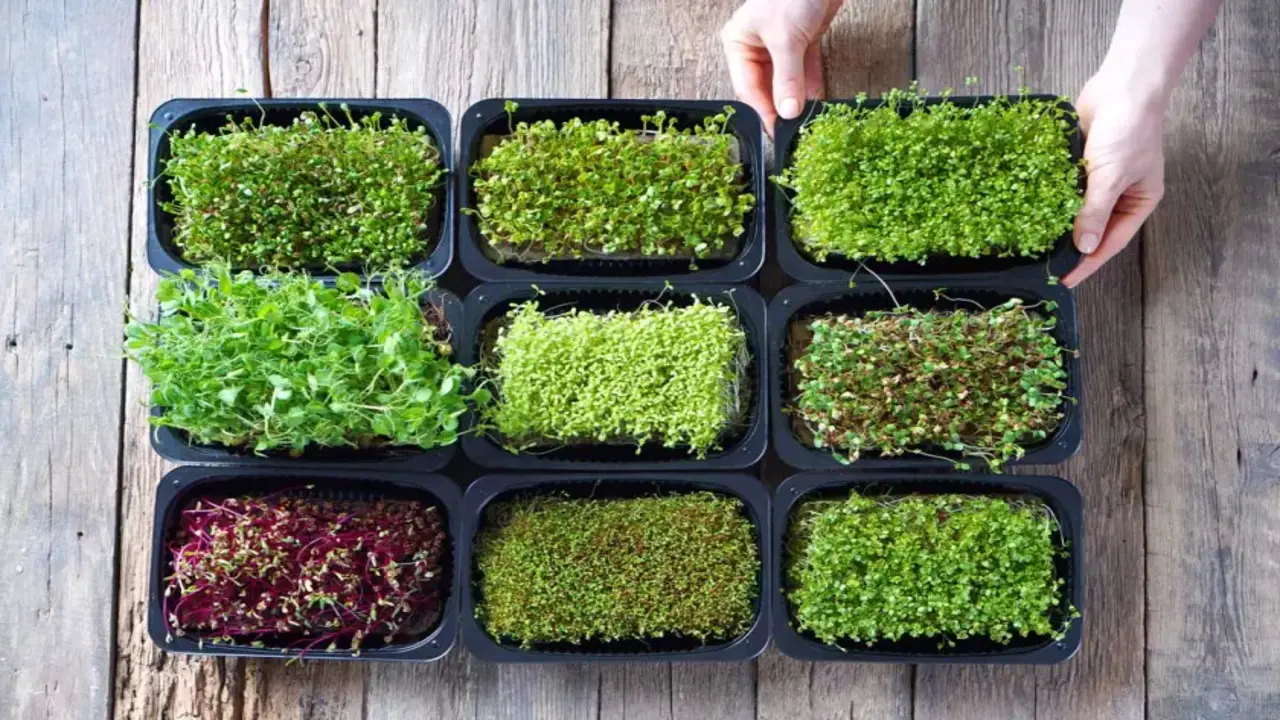
Understanding the pros and cons of growing microgreens at home is essential for anyone interested in engaging in this popular gardening trend. Microgreens, young vegetable and herb plants harvested early, have gained significant popularity due to their higher nutrient content and versatility in culinary applications.
Pros
- Costeffective: Growing microgreens at home can be a cost-effective way to enjoy these nutritious greens. Buying microgreens from the store can be expensive, but growing them at home saves you money in the long run.
- Freshness: When you grow microgreens at home, you have direct control over their freshness. You can harvest them when they peak, ensuring you consume the freshest and most nutrient-dense microgreens possible.
- Nutrientrich: Microgreens are famous for their high nutritional value. They are packed with vitamins, minerals, and antioxidants. Growing them at home ensures you are consuming the freshest and most nutrient-rich microgreens available.
- Convenience: Having a ready supply of microgreens at home is convenient. You can easily incorporate them into your meals, adding flavour, texture, and nutritional value to your dishes without going to the grocery store.
Cons
- Limited Space: Growing microgreens at home requires sufficient space, which may be a challenge for individuals living in small apartments or houses.
- Time-Consuming: Growing microgreens at home can be time-consuming, requiring regular watering, monitoring, and harvesting. This may not be suitable for individuals with busy schedules or those who prefer low-maintenance plants.
Conclusion
Growing microgreens indoors is not only a fun and rewarding hobby, but it also offers a variety of health benefits. With the right equipment and techniques, anyone can grow microgreens in their home. From adding a burst of flavour to your meals to providing a source of fresh and nutrient-rich greens, microgreens are a valuable addition to any home garden.
So why not try it and start growing your microgreens today? With a little patience and determination, you’ll soon be enjoying your labour’s fruits (or greens). If you read the above outline properly, we hope you understand how to Growing Microgreens.
FAQ
1.What Are Microgreens?
Microgreens are young, edible greens that are harvested when they are only a few inches tall. They are packed with nutrients and have intense flavours, making them popular for garnishes and salads.
2.Why Should I Grow Microgreens Indoors?
Growing microgreens gives you a fresh and continuous supply of these nutritious greens throughout the year. It is convenient, requires minimal space, and is a rewarding way to add healthy greens to your diet.
3.What Are The Basic Requirements For Growing Microgreens?
You will need seeds, a shallow container, potting soil, and a light source to grow microgreens indoors. Ensure the seeds are moist but not overwatered and provide sufficient light for healthy growth.
4.Why Are Microgreens Popular For Indoor Growing?
Microgreens are popular for indoor growing because they require very little space and can be grown year-round. Indoor growing allows for better control over environmental factors such as temperature and lighting, resulting in consistent and healthy growth.
5.How Can Microgreens Be Grown Indoors?
To grow microgreens indoors, you will need a shallow container, a growing medium like soil or hydroponic mats, seeds, and access to natural or artificial light. Sow the seeds densely, keep them moist, and provide adequate air circulation. Within a couple of weeks, you will have fresh and ready-to-harvest microgreens.


